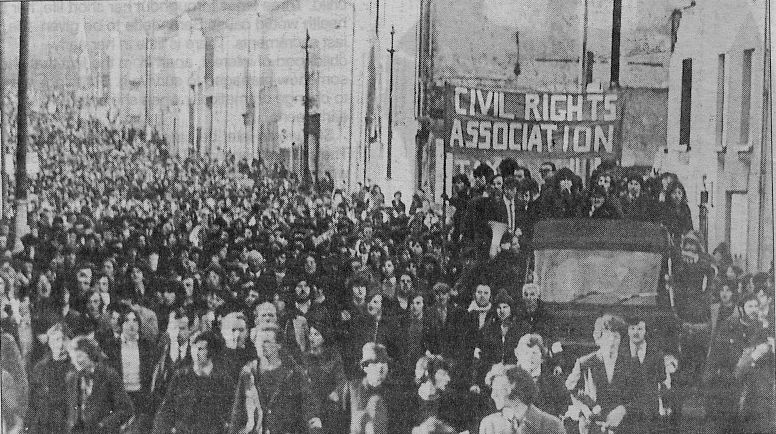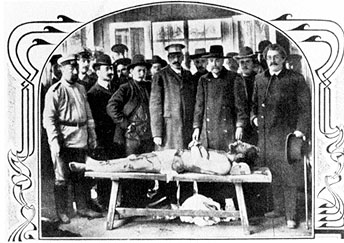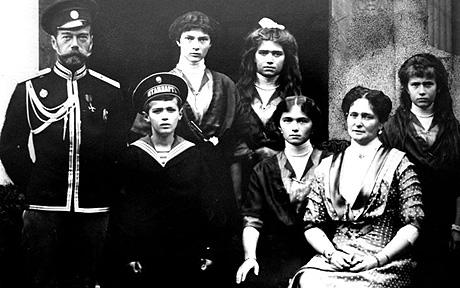Thousands of working class people—not Social Democrats but just the loyal working people—under the leadership of priest George Gapon—annoyed by an economic slump, poor working conditions, and the ongoing Russo-Japan War, marched on the freezing Sunday morning of January 22, 1905, to the Winter Palace, just to submit their kind petition to the Tsar Nicholas II, asking for reforms. But all of a sudden, troops were called out and Cossacks attacked the crowd with drawn swords. Then, they started firing on the peaceful crowd of unarmed people resulting into the pools of blood on the white snow. Such is the general picture of Bloody Sunday (1905). Bloody Sunday (1905) has its own historical significance, while it comes to Russian Revolution. But here goes an attempt to put together 10 most important facts about the Bloody Sunday Massacre 1905, few of which may sound quite unknown to many.
10. One of the largest strikes in Russian History
Bloody Sunday is actually known to be one of the largest ever strikes in the Russian history. By Friday, there were about 105,000 workers gathered on the streets of St Petersburg. And on a freezing Sunday morning, one of the largest strikes in Russian history took place: the Bloody Sunday. It’s been estimated that around 150,000 working class people demonstrated that day and marched on the Winter Palace, demanding concessions from the Tsar to stop living conditions aggravating every day. It began as a relatively peaceful demonstration by proletarians, annoyed by contemporary economic crisis, poor economic conditions, and ongoing Russo-Japanese War.
9. Scores of deaths and injuries
However began as a peaceful procession, the workers were gunned down on the streets by panicky soldiers, resulting into scores of deaths and injuries. The troops, after firing few warning shots, started firing directly into the dense crowd. Cossacks on horseback charged slashing at people with their sabers. There exist different estimates about the death toll, but nearly 200 people, including children, were killed. The Tsar’s officials recorded 96 dead and 333 injured while some anti-tsar sources claimed over 4000 dead and thousands injured. Tsar, after this mass killing of dissident civilians, could never regain the trust of people.
8. Maxim Gorky and Bloody Sunday
The popular author Maxim Gorky was an active participant of Bloody Sunday (1905) revolution. Gorky was a close associate of the social democrats but on the eve of Bloody Sunday, he visited Sergey Witte, together with a group of intellectuals. They were discussing and trying to prevent the tragedy. Sergey is also the author of the October Manifesto of 1905. After the revolution, Gorky was arrested on charges of preparing a coup d’etat. After the cultural figures from Russia and Europe rose up to defend him, Gorky was released from Jail and emigrated from Russia.
7. There’s no God anymore; there’s no Tsar
Priest George Gapon was among those people who survived the massacre of Bloody Sunday. About 40 people surrounding him were killed, but he survived uninjured and found refuge in the home of Maxim Gorky. While he was staying at Gorky’s home, being terrified of Bloody Sunday massacre, he wailed, “There’s no God anymore; there’s not Tsar.” He escaped abroad However, was killed by government agent when they found him,
6. Father Gapon wasn’t Anti-Tsar
Neither Father Gapon nor his legions of demonstrators were Anti-Tsar indeed. They were dressed in their Sunday best and had carried the icons and portraits of Tsar. They were even singing the hymns and songs proclaiming their support and trust for him. People even affectionately used to call him their Little Father. He was believed to be a good man who would address the grievances of workers. With the same essence, workers were marching peacefully towards Winter Palace to submit the petition asking for some reforms. But the Tsar wasn’t at the palace at that time, and thing went all violent immediately after the troops were called out.
5. Followed by General Strike and October Manifesto
After Bloody Sunday, the Russia plunged into chaos. It was followed by a general strike that swept away the country. Around 400,000 people actively participated in the strike and the strike lasted for a couple of months. All kind of people including teachers, doctors, engineers, workers, students, and revolutionaries took to the streets demanding for the change. Now, the Nicholas had only two choices: either to use force to put down the rebellions or to make a conciliatory offer to the people. As the first choice had no guarantee of success, he chose the second by issuing the October Manifesto on 30th of October 1905.
4. Emergence of ARPU, the first nationwide peasant organization
After Bloody Sunday, revolution flared up in all social groups in all parts of the country. About 3 million working class people went on strike for about two months. The liberals formed the Union of Unions which clamored for a constituent assembly. One of the noble outcomes of the movement was the emergence of the first nationwide peasant organization called ARPU (All-Russian Peasants’ Union).
3. Failed to overthrow Tsardom
For sure, it was the Bloody Sunday that had damaged the faithfulness of Tsar among common people. But it could not overthrow the Tsar regime. By issuing the October Manifesto, Tsar slowed down the revolution. The October Manifesto seemingly brought rewards to the protestors, but by December Nicholas used his loyal armies to diminish St Petersburg Soviet and to crush people on strike in Moscow.
2. Bloody Sunday wasn’t the first time that people had spoken against Tsars
It’s true that Bloody Sunday was the final major uprising against the autocratic Tsars. But, it wasn’t the first time that people had spoken against the Tsar. Decembrists, who are recognized by their revolt against Tsar’s autocracy, are considered the forefathers of Russian Revolution. But, Bloody Sunday had the much stronger aftereffects than the Decembrist revolt. Decembrist revolt was quickly dispersed by a few armed troops.
1. Spark off the Russian revolution 1905
Rather than squelching the protests and demonstrations, the repression on people fanned the flames of rebellion. Different sectors of people moved into active protest all across Russia. The working class people started to get united with middle classes to spark of revolution against the oppression of Tsarist Monarchy. The revolution came. The working class people who naively trusted the Tsar received a momentous lesson after Bloody Sunday. And that’s how Bloody Sunday became the real trigger to the Russian Revolution 1905.
Final Conclusion:
If anything was needed to damage the trust and affection of proletarians towards the Tsar, Bloody Sunday (1905) was it. That ruthless and unjust military response was really unfortunate and it rightly drew criticism from around the world. After scores of workers who blindly trusted the Tsar being killed and the Priest Gapon prudently retreated abroad and later on murdered, a strong wave of protests and strikes across the country bolstered into a full-blown revolution that forced Nicolas II to issue October Manifesto, a promise to introduce democracy in Russia. For the time being, the manifesto had certainly drawn the teeth for Russia’s revolution, but as the people were already aware, the Russian Revolution gradually progressed. However, Bloody Sunday could not overthrow instantly the Tsars, but it formed the strong foundation for the revolution thereafter.
Arun is an IT-gradate. But writing is something he has innate passion for. He loves to explore new things, places and ideas.










